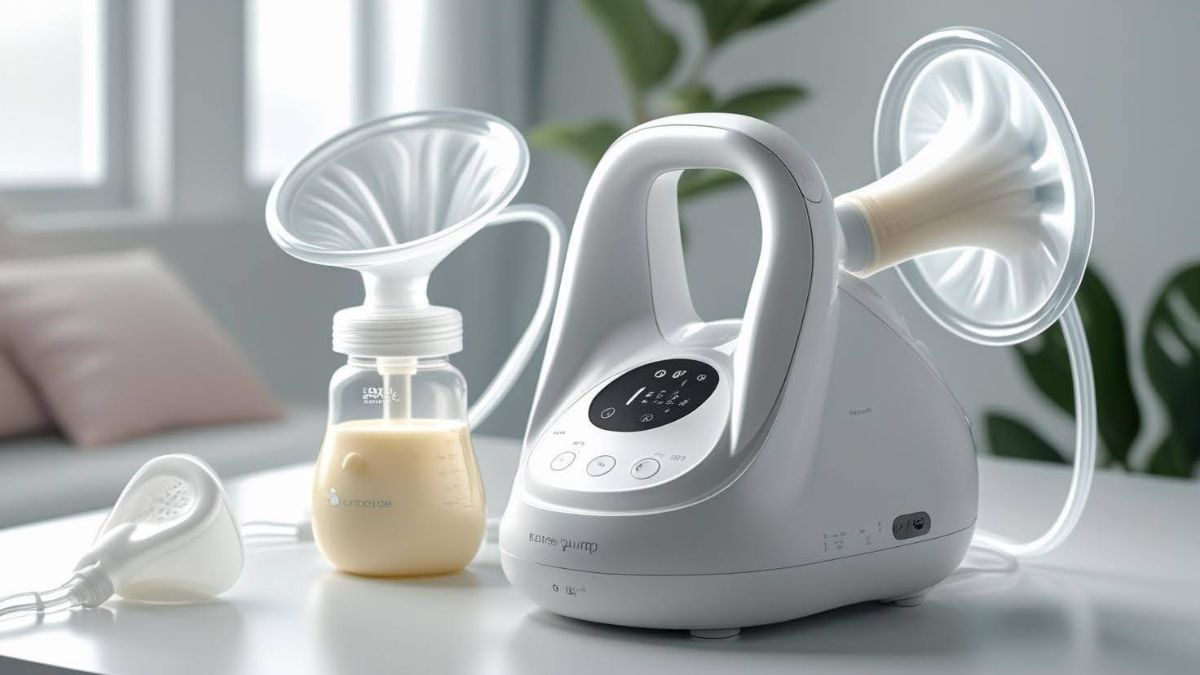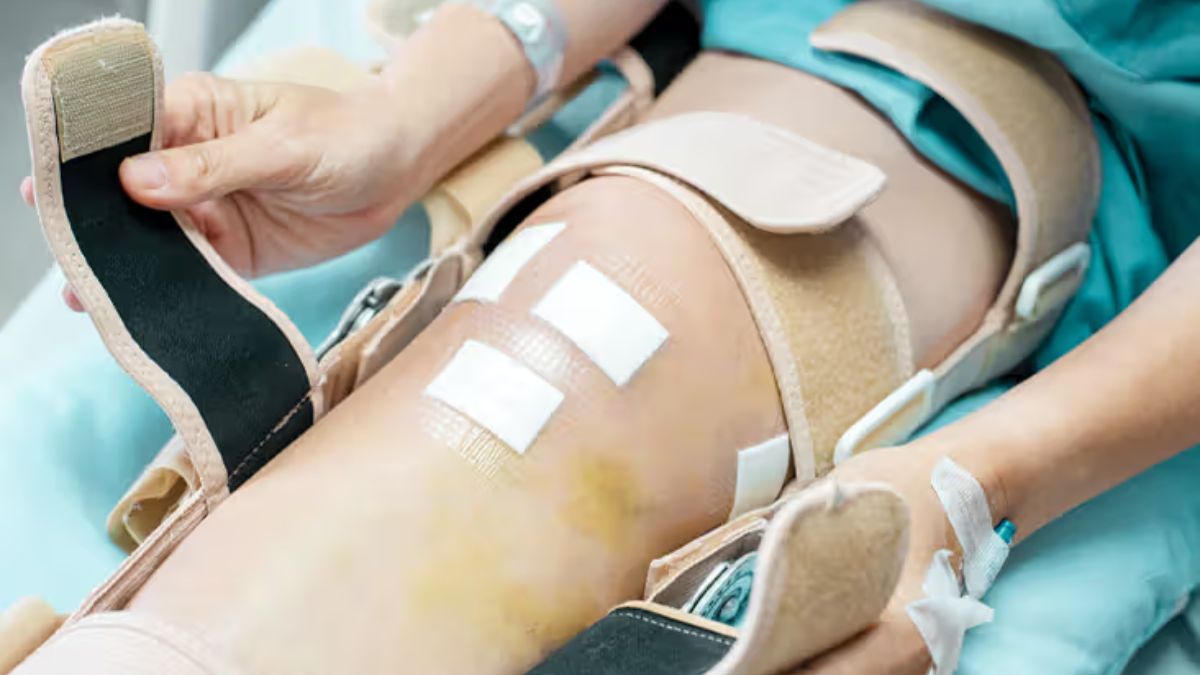HEALTH
5 Useful Tips To Manage Adult Diapers

Adult nappies come in handy for those having bowel or urinary incontinence, dementia, impaired mobility, or violent diarrhea. The diapers exist primarily for people older than newborns or toddlers. They are of larger sizes and come in different shapes that resemble underpants, kid nappies, and sanitary pads.
Diapers are very useful in managing many health conditions and maintaining a healthy environment for the sick. In incontinence, for example, highly absorbent bed pads give comfortable containment of any leaking bowel wastes.
However, inappropriate handling of these nappies can do more harm than good. For starters, if the patient is suffering from a contagious disease, it is vital to dispose of the diapers carefully to avoid spreading.
Skin rashes, allergic reactions, secondary infections, and uncomfortably may occur with diaper use if not appropriately handled. So, it is best to comprehend everything about using and handling adult diapers before using them. Follow these simple tips to get the best from adult diapers.
Talk To A Doctor
Many people suffering from incontinence do not dare to see a doctor for fear of exposure. Research indicates that almost seventy percent of people with incontinence do not seek help for their condition.
It is agreeable that wearing adult diapers can be a source of embarrassment since it is unfamiliar and physically challenging. So, you’ll see one opting to buy adult diapers secretly to avoid criticism. But, without any qualified guidance, one might end up contracting disorders like Urinary Tract Infections (UTIs) and perioral dermatitis ( diaper rash) that might aggravate the existing condition.
Therefore, it is vital to seek the advice of a doctor, a family doctor, or any other trusted qualified personnel to know how to handle your situation. Apart from when and whether to use adult diapers, the doctor will also help you manage any offshoots experienced when you use diapers. Regular visits for checkups are, therefore, essential.
Change the Diapers Regularly
Apart from UTIs and diaper rashes, prolonged urine and bowel waste exposure causes skin ulcers, often called bedsores or decubitus ulcers. Maintaining a healthy diaper environment is essential to keep off infections and sores, and frequently changing the nappies is one way to do that.
You’ll want to replace the grown-up diapers immediately after the soil to conserve skin integrity. Before changing the diaper, one must have a few essentials: one or two pairs of disposable gloves, extra clean diapers, wet wipes, a waste bag, and skin preservation barrier lotion.
Ensure to wash your hands with soap before and after changing the diapers. After carefully peeling off the soiled diaper, use the wet wipes to clean the perineal area while checking for any early indication of sores. When done, apply the cream or lotion and wait for it to dry before wearing the new diaper.
It is helpful to get help while changing the diapers; two people can replace them without any complications. Also, dispose of the used gloves, diapers, and wipes carefully to avoid contamination.
Use Well-Fitting Diapers

Determining the diaper sizes is significant for maintaining comfortability and skin integrity and successfully holding the wastes. A small diaper will probably tighten when soiled to increase pressure on the skin and lead to infections and sores. Also, large diapers are unlikely to contain the waste, and leaking may occur. No one likes the smell of urine or sored skin; to be safe, consider different diaper sizes to find your perfect size or your loved ones’.
Shifting Positions Is Key
The absorbent material in diapers accumulates bowel wastes on the side one leans on, making the diapers heavy on one side. Besides, when one sleeps in one position for a long time, the skin is exposed to dampness, leading to skin breakdown and sores.
Constantly shifting sleeping positions is vital to avoid pressure and skin ulceration. If the patient is bedridden, keep them upright once in a while, but take caution as rapid vigorous movements can affect the diaper’s permeability.
Prevent Leaks and Use Skincare Routines
Apart from unfitting diapers, the other causes of leaks include poor quality and inappropriate wearing of diapers. You should ensure you get quality diapers from trusted brands for a better diaper experience. Secondly, it is helpful to follow the instructions for use correctly. Wearing a diaper is straightforward, but it is not apparent, and one should ensure to seal all the straps properly.
What is more interesting is that currently, there are booster pads to help absorb more liquid. You need to fit the pad on your diaper, especially at night, to avoid replacing the pads every time.

Skin products, including protective lotions, ointments, and creams, are critical in maintaining healthy skin while using diapers. When you develop rashes, seek medical care, but you should use skincare products to prevent this from happening.
Conclusion
The quality of adult diapers is an important consideration, but what is more important is how you handle the diapers. Keep the diaper environment healthy by frequently changing the diapers, washing or dumping any contaminated clothing, and preventing leaks. The points above give more tips on how to manage adult diapers.
HEALTH
Why a Portable Breast Pump Is a Must-Have for Modern Moms

Moms need solutions that adapt to their lifestyle—not the other way around. For breastfeeding mothers, staying on top of milk expression while managing errands, travel, or work can be challenging. That’s where the portable breast pump comes in.
Unlike traditional models that require wall outlets and stationary sessions, portable pumps are designed to move with you—offering freedom, flexibility, and confidence. Let’s dive into why this small yet powerful device can make a big difference in your breastfeeding journey.
Why Portability Matters for Consistent Milk Expression
Breastfeeding or exclusive pumping demands regular and consistent milk expression to maintain supply. Skipping a session due to logistics or time can lead to discomfort, engorgement, or a dip in supply.
A portable breast pump ensures:
- You never miss a pumping session no matter where you are
- Milk expression stays consistent, preserving supply
- Greater comfort and flexibility, especially in public or shared spaces
What Makes a Portable Pump Different from Traditional Models?
Traditional breast pumps are often bulky and require power outlets, making them ideal only for home use. A portable breast pump, however, offers:
- Compact design that fits in bags or purses
- Rechargeable battery or USB charging, eliminating cords
- Quiet operation for discreet use
- Wireless freedom, with no tubes or external bottles to manage
These features give moms the ability to pump anywhere—whether at work, in the car, or while traveling.
Why a Portable Breast Pump Is Ideal for On-the-Go Moms
Whether you’re a working mom, a traveler, or just love spending time outdoors, portable pumps simplify your routine. They let you:
- Pump in between meetings or while commuting
- Stay active with baby while managing milk expression
- Avoid stress from skipped sessions, especially during busy days
Portable pumps are perfect companions for busy lifestyles, helping moms stay consistent and confident.
How to Choose a Portable Pump That Adapts to Your Daily Feeding Goals
When shopping for a portable pump, prioritize:
- Adjustable suction levels for comfort and effectiveness
- Battery life long enough for multiple sessions
- Quiet operation if you’ll be pumping in public
- Easy-to-clean parts to save time
- Compatibility with your flanges, bottles, or bags
You can explore a guide to managing milk output with a portable breast pump to better understand your daily needs and how a good pump supports your goals.
How to Use a Portable Breast Pump to Maintain Milk Supply
To get the most out of your portable pump:
- Stick to a pumping schedule, especially if baby isn’t nursing directly
- Use massage mode first, then switch to expression mode for maximum output
- Clean parts after each use to ensure hygiene and performance
- Track output and timing to adjust sessions as needed
The key is consistency. With a portable pump, this becomes much easier to maintain throughout your day.
Conclusion
A portable breast pump bridges the gap between breastfeeding goals and a mom’s demanding schedule. Lightweight, quiet, and efficient, it empowers you to pump on your own terms—whenever and wherever needed.
Whether you’re heading back to work, traveling, or managing a busy home life, this compact tool ensures your baby gets the best nourishment without compromising your comfort or flexibility.
HEALTH
Mega-Personal.net Health Archives: A Resource for Informed Decision-Making in Healthcare

In today’s fast-paced world, making informed decisions about healthcare is more crucial than ever. With an overwhelming amount of online information, sifting through it can feel like navigating a maze. Enter Mega-Personal.net Health Archives—a treasure trove of reliable health-related content designed to empower individuals in their healthcare journeys. Whether you’re seeking answers about medical conditions, treatment options, or wellness strategies, this resource stands out as a beacon of clarity amidst the chaos. Let’s explore how these archives can guide you toward better health choices and enhance your understanding of personal well-being.
The Importance of Informed Decision-Making in Healthcare
In today’s complex healthcare landscape, informed decision-making is vital. Patients face countless options and potential outcomes. Understanding these choices can significantly impact health.
Knowledge empowers individuals to ask the right questions. It enables them to evaluate treatments or procedures critically. When patients are well-informed, they are more likely to engage in their care actively.
Moreover, informed decisions lead to better health outcomes. Studies show that when patients understand their conditions and treatment plans, compliance improves. This leads to a smoother recovery process and overall satisfaction with care received.
Additionally, navigating through medical information can be overwhelming. Reliable resources help simplify this journey by providing clear insights into various health topics. Making educated choices fosters trust between patients and providers while enhancing collaboration for optimal results.
How Mega-Personal.net Health Archives Can Help
Mega-Personal.net Health Archives serves as a treasure trove of information for anyone navigating the complex world of healthcare. With countless articles and resources at your fingertips, it empowers users to make informed decisions about their health.
The archives cover various topics, from nutrition and exercise to mental health and chronic conditions. This extensive range ensures that individuals can find relevant content tailored to their unique circumstances.
Additionally, the platform’s user-friendly interface makes it easy to search for specific issues or browse by category. Whether you’re seeking preventative tips or management strategies for existing conditions, you’ll discover valuable insights without feeling overwhelmed.
By providing access to expert-reviewed materials, Mega-Personal.net Health Archives fosters confidence in decision-making. Users are better equipped to ask questions during medical appointments and engage actively in their own care journey.
A Comprehensive Collection of Information
Mega-Personal.net Health Archives stands out with its vast array of resources. Users can explore a multitude of topics ranging from nutrition and mental health to the latest medical advancements.
The database is meticulously curated, ensuring that information is accurate and up-to-date. This comprehensive collection allows users to find reliable answers quickly.
In addition to articles, you’ll discover infographics, videos, and expert interviews. These diverse formats cater to various learning styles.
Whether you’re a patient seeking clarity or a caregiver looking for guidance, this resource meets your needs. The archives empower individuals by providing in-depth insights into complex healthcare issues.
With user-friendly navigation features, finding specific content becomes effortless. Each piece is designed not just to inform but also to inspire action towards better health decisions.
Testimonials from Users
Users of the Mega-Personal.net Health Archives have shared remarkable stories. Their experiences highlight how access to reliable information transformed their health journeys.
One user found answers that helped them navigate chronic illness. They expressed gratitude for being able to educate themselves, leading to informed discussions with healthcare providers. This empowerment made a significant difference in their treatment choices.
Another testimonial came from a caregiver who utilized the archives as a resource for understanding complex medical terms and conditions. The clarity provided by the content eased anxiety and strengthened communication with medical professionals.
These personal accounts emphasize trust and reliance on Mega-Personal.net Health Archives. Users appreciate having accurate, accessible resources at their fingertips, contributing positively to their overall well-being. Each story reflects a commitment to better health through knowledge and awareness in an often overwhelming medical landscape.
Accessing the Archives: Subscription and Membership Options
Accessing the Mega-Personal.net Health Archives is straightforward. Whether you’re a casual user or a health enthusiast, there are options tailored to your needs.
The subscription model offers flexibility. With monthly plans, you can explore various topics without long-term commitment. It’s perfect for those seeking specific information on demand.
For dedicated users, membership brings added benefits. Members gain exclusive access to premium content and resources not available to standard subscribers. This includes expert insights and in-depth articles that enhance understanding of complex health issues.
Additionally, both options come with user-friendly interfaces so you can navigate easily. Finding what you need is hassle-free, whether it’s recent studies or historical data.
Your journey towards informed healthcare decisions begins here, making knowledge accessible at your fingertips.
Conclusion: Empowering Individuals Through Knowledge
Empowering individuals through knowledge is at the heart of Mega-Personal.net Health Archives. This platform offers a wealth of information that enables users to make informed healthcare decisions. By providing access to a comprehensive collection of articles, research, and expert opinions, it bridges the gap between patients and necessary health resources.
Knowledge equips you with confidence in discussions with healthcare providers. It allows for better understanding and engagement in personal health management. The testimonies from satisfied users underscore how this resource has transformed their approach to healthcare.
Whether exploring symptoms or researching treatment options, the archives are an invaluable tool. With various subscription and membership options available, gaining access to this extensive repository is easy.
Making informed choices about your health can lead to improved outcomes and overall well-being. Dive into Mega-Personal.net Health Archives today and take control of your healthcare journey.
HEALTH
How Delayed Care After Surgery Can Lead to Dangerous Infections

Surgery is often seen as the peak of a patient’s medical journey, but in reality, healing begins after the incision is closed. What happens in the hours and days following a procedure can make all the difference between recovery and life-threatening complications. When patients are neglected during this critical window—when signs of infection are missed or care is delayed—the consequences can spiral into organ failure, sepsis, or even death.
Hospital-acquired infections are among the most preventable causes of injury in modern healthcare. Yet, delayed recognition and treatment continue to be leading contributors to catastrophic outcomes after surgery. In many cases, the danger isn’t in the operating room—it’s in the silence that follows. Patients and families who experience these tragedies often turn to legal advocates like Meinhart and Manning to hold negligent providers accountable and seek justice for harm that was never supposed to happen.
When Postoperative Monitoring Falls Short
Following surgery, patients should be closely observed for signs of infection, especially those who are immunocompromised or undergoing major procedures. Vital signs, wound appearance, fluid output, and pain levels all tell a story—but someone needs to be listening. When hospital staff fail to monitor changes or delay responding to concerns, minor symptoms can quickly escalate.
What begins as a low-grade fever or slight swelling may be dismissed as routine discomfort. But within hours, that “normal” post-op recovery can evolve into a raging infection. Early intervention is key—yet too many hospitals cut corners on staffing, leave patients in understaffed wards, or ignore the urgency flagged by nurses and families.
Warning Signs That Should Never Be Overlooked
When an infection starts, the body shows clear signs that something is wrong. Healthcare providers must recognize these signs and act quickly. Ignoring them can lead to serious and preventable problems. Key warning signs that need immediate medical attention include:
- Elevated heart rate which can indicate the body is under stress from an internal infection.
- Rapid or labored breathing is a sign of potential sepsis or respiratory distress.
- Confusion or disorientation is often a red flag for systemic infection, especially in older adults.
- Escalating pain at or near the wound or surgical site.
- Redness, swelling, or warmth that continues to spread around the wound.
- Pus or discharge from an incision or injury, especially if it has an odor.
- Fever or chills are common early symptoms of infection.
- Persistent fatigue or weakness that interferes with daily functioning.
The Cost of Hospital-Acquired Infections
Infections like MRSA, sepsis, and C. diff are known risks in hospital settings, yet many are still the result of poor hygiene, inadequate protocols, or delayed action. A single infection can lead to additional surgeries, amputations, or months of ICU care. For the patient, it often means prolonged pain, permanent disability, or, in the worst cases, death.
Beyond the physical toll, the emotional and financial burdens are immense. Families must deal with mounting medical bills, missed work, and the heartbreak of watching a loved one suffer. Infections that could have been prevented with prompt care are among the most painful types of malpractice because they are both common and avoidable.
When Providers Dismiss or Downplay Concerns
A critical failure in postoperative care is the tendency of some providers to downplay or deflect patients’ concerns. Complaints of pain, unusual discharge, or fatigue may be chalked up to a normal part of healing. But patients know their own bodies, and when they feel that something is wrong, their voices deserve to be taken seriously.
Delayed responses often stem from a culture of dismissiveness or hierarchy, where nurses feel unable to challenge doctors, and patients are left waiting for decisions from higher-ups. This lag in attention can make the difference between a course of antibiotics and a medical emergency. Empowering all team members to act on concerns is crucial, but when this system fails, accountability must follow.
Infection in the Shadow of Surgery
The public perception of surgery tends to focus on the technical skill of the operating physician. But the risk of infection isn’t just about what happens on the table—it’s about what happens next. Surgical wounds are highly vulnerable to bacteria, especially in hospitals where resistant strains thrive.
When sterile environments aren’t maintained, or dressings aren’t properly changed, bacteria can enter the body and multiply quickly. A delay of just 24 hours in identifying and treating a surgical infection can mean the difference between full recovery and permanent damage. The operating room may have been sterile, but it’s what happens in the recovery room that often determines the outcome.
The Tragedy of Sepsis and Septic Shock
One of the most devastating consequences of a delayed infection diagnosis is sepsis—a condition where the body’s response to infection spirals out of control. If untreated, it can lead to tissue damage, organ failure, and death. Time is everything. Once sepsis takes hold, every hour of delay increases mortality risk significantly.
Families often find themselves blindsided by the rapid decline: one day, the patient is recovering from surgery; the next, they are fighting for their life. Medical records reviewed in hindsight often show that warning signs were present but not acted upon. The tragedy isn’t just in the infection itself—it’s in the missed opportunity to stop it in time.
How Systemic Failures Contribute to Delay
It’s not always one person’s mistake that leads to delayed care—it’s often a cascade of failures. Charting errors, missed pages, short staffing, or a lack of standardized infection protocols can all contribute to delayed diagnosis and treatment. These aren’t isolated missteps—they reflect a system not designed to respond quickly to a crisis.
When hospitals prioritize efficiency or profit over patient safety, infections rise, and lives are put at risk. Legal claims not only address the damage to individual patients but also highlight dangerous systemic trends that need to be corrected. A lawsuit can become a call for broader reform that protects future patients from similar fates.
Seeking Accountability Through Legal Action
When a preventable infection changes a life forever or takes it, the pursuit of accountability becomes vital. Legal action gives families a voice when hospitals offer none. It allows them to ask: Why wasn’t my loved one monitored more closely? Why were the signs ignored? What policies were in place—and why didn’t they work?
Working with experienced attorneys ensures that these questions are not brushed aside. It opens the door to compensation for pain, medical bills, lost income, and more. But perhaps most importantly, it helps ensure that no other patient is left waiting in silence while an infection spreads. With legal advocacy, justice can do more than heal—it can prevent.
-

 TECHNOLOGY2 weeks ago
TECHNOLOGY2 weeks agoTop 10 Must-Read Stories from Kristen Archives You Can’t Miss
-

 TECHNOLOGY6 months ago
TECHNOLOGY6 months agoSky Bri Net Worth Revealed: How She Built Her Financial Empire
-

 TOPIC8 months ago
TOPIC8 months agoBasement Renovation Contractors: How They Tackle Structural Issues During Renovations
-

 TOPIC3 months ago
TOPIC3 months ago5 Reasons the //Vital-Mag.Net Blog Dominates Lifestyle
-

 TOPIC1 month ago
TOPIC1 month agoTop 10 Articles from the ://Vital-Mag.net Blog That You Can’t Miss
-

 CRYPTO5 months ago
CRYPTO5 months agoCrypto30x.com Review: Is It the Right Platform for You?
-

 BUSINESS2 weeks ago
BUSINESS2 weeks agoTraceLoans Explained What You Need to Know
-

 BUSINESS4 weeks ago
BUSINESS4 weeks agoDecoding the Kennedy Funding Ripoff Report: Facts vs. Fiction
